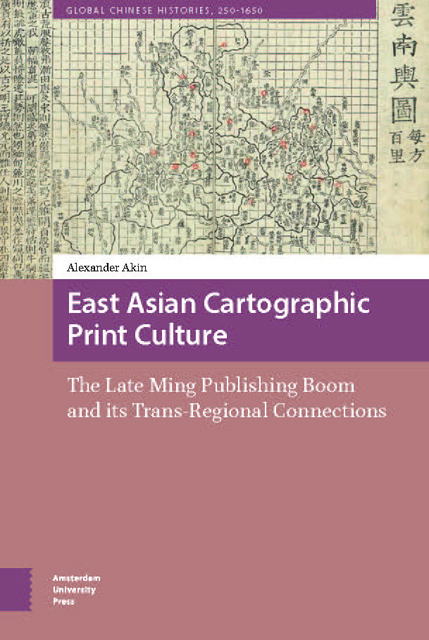 East Asian Cartographic Print Culture
East Asian Cartographic Print Culture Book contents
- Frontmatter
- Table of Contents
- Acknowledgments
- Introduction
- 1 Printed Cartography in the Late Ming: Old Typologies, New Audiences
- 2 Chinese Historical Cartographies: Mapping the Past
- 3 The Jesuits as Participants in the Late Ming Publishing Boom
- 4 Chosŏn Cartography in a Trans-regional Context
- 5 Japanese Cartography between East and West
- Conclusion
- Appendices
- Bibliography
- Index
1 - Printed Cartography in the Late Ming: Old Typologies, New Audiences
Published online by Cambridge University Press: 12 January 2023
- Frontmatter
- Table of Contents
- Acknowledgments
- Introduction
- 1 Printed Cartography in the Late Ming: Old Typologies, New Audiences
- 2 Chinese Historical Cartographies: Mapping the Past
- 3 The Jesuits as Participants in the Late Ming Publishing Boom
- 4 Chosŏn Cartography in a Trans-regional Context
- 5 Japanese Cartography between East and West
- Conclusion
- Appendices
- Bibliography
- Index
Summary
Abstract
This chapter examines a sequence of major Ming publications in the categories of national gazetteer, atlas, maritime defense treatise, and encyclopedia, chosen for their influence and for their illustration of important trends or turning points in printed cartography. Outlining the ways in which these works organize information, it examines their relationship to earlier precedent-setting works, demonstrating that one feature of the Ming publishing boom was the reproduction and greatly expanded circulation of earlier maps, some from as early as the Song and Yuan. By the time the illustrated encyclopedias of the early seventeenth century were being compiled, a large proportion of their maps derived directly from the works discussed in this chapter.
Keywords: Chinese cartography, Da Ming yitong zhi, Guang yutu, Chouhai tubian, Tushu bian, Sancai tuhui
I have chosen the mid-sixteenth century as the starting date for this discussion of the late Ming cartographic publishing boom. What begins to change significantly around this point is the range of ways in which maps circulate, the intellectual contexts into which they are placed, and the audiences they reach. From this period forward, maps and their accompanying texts become a significant part of the reading matter of broader sectors of society.
In this chapter we turn to a sequence of major Ming publications, each of which has been chosen for its influence and for its illustration of important trends or turning points in printed cartography. In each case I will outline the ways in which these works organize information, and their relationship to earlier precedent-setting works. We shall see that part of the publishing boom was the reproduction and greatly expanded circulation of earlier materials, some from as early as the Song and Yuan. By the time the illustrated encyclopedias of the early seventeenth century were being compiled, a large proportion of their maps derived directly from the works discussed in this chapter.
As more books featuring maps made their way into print, an increasing number of works featured maps as a self-sufficient component. By the mid-sixteenth century there also appeared an increasing number of large maps made by pasting together multiple printed sheets, which though still heavily annotated with text, were expected to stand on their own for both edification and decoration.
- Type
- Chapter
- Information
- East Asian Cartographic Print CultureThe Late Ming Publishing Boom and its Trans-Regional Connections, pp. 41 - 92Publisher: Amsterdam University PressPrint publication year: 2021
